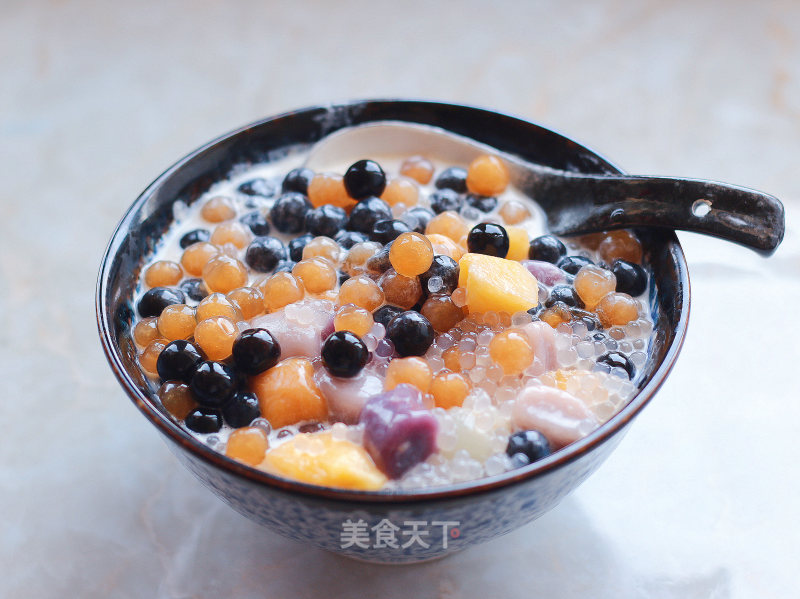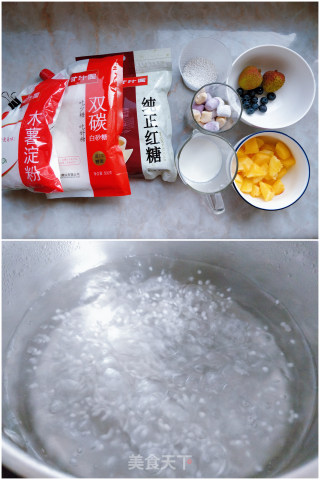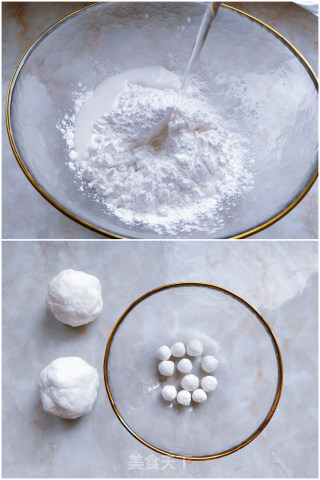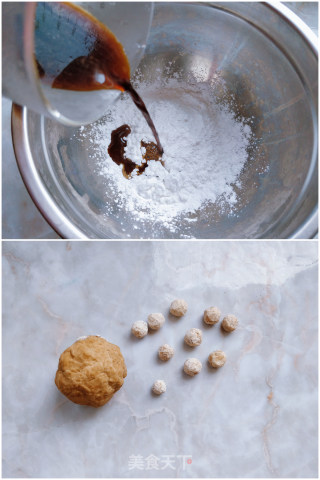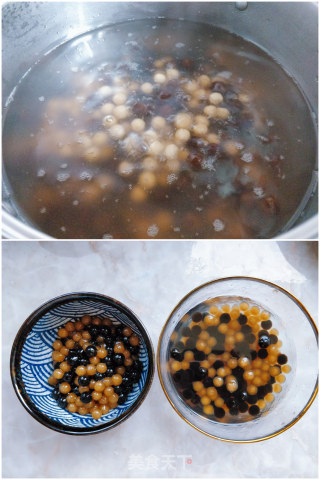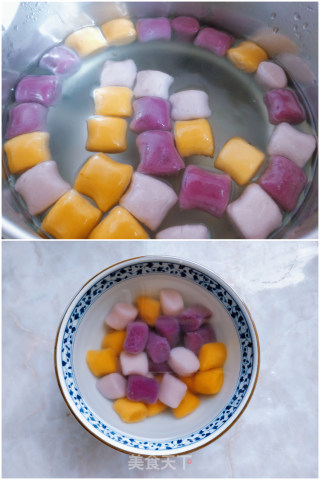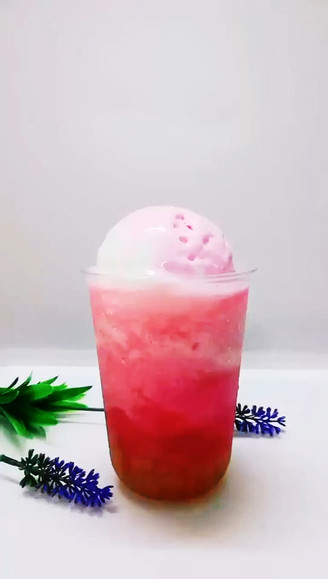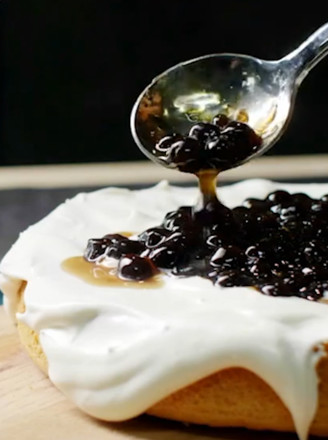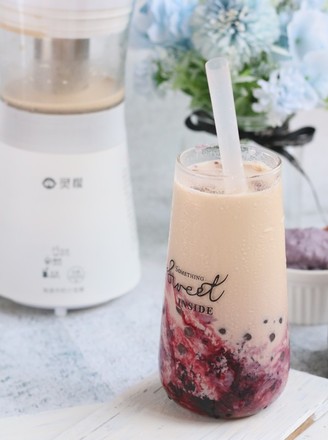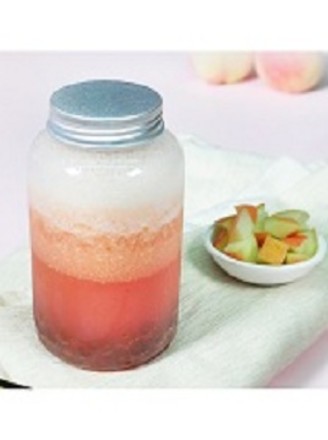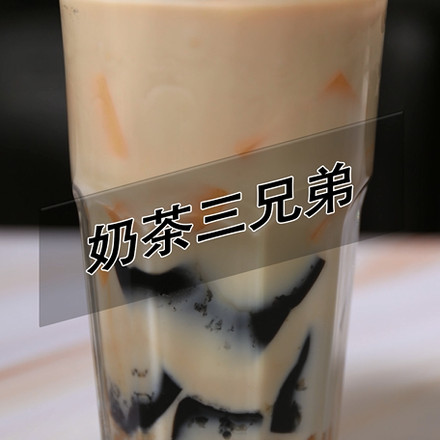Amber Pearl Sago
by Looking for Peach Blossom Island
Favorite
Difficulty
Normal
Time
1h
Serving
2
The hotter the weather, the better the business of the cold drink shop. In the cold food book I posted a few days ago, a friend left a message saying that he opened a cold drink shop, selling roasted immortal grass, taro balls, ice powder and sago dew, earning five to six hundred a day, which is really enviable. Since everyone likes these cold drinks, today I will introduce you a delicious, beautiful and popular cold drink-amber pearl sago.
As you can see from the name, it consists of several parts: amber and brown sugar pearl balls, taro balls, sago dew, together with a few pieces of seasonal fruits and a ball of ice cream. This bowl is well sold for over twenty In fact, the cost of ingredients is only a few bucks.
The method of taro balls has been introduced in the previous recipe of "Red Bean and Taro Balls Burning Immortal Grass", so I won't repeat it here. I will mainly talk about the method of rubbing pearls at home. This pearl is what we often call the "milk tea pearl". It can be placed in milk tea, fruit juice, or cold-drinked as a dessert. Let's take a look next.
Amber pearl: 10 grams of white sugar, about 70 grams of boiling water, 100 grams of tapioca starch.
Milk tea pearl: 15 grams of brown sugar, about 70 grams of boiling water, 100 grams of tapioca starch.
Sago Dew: 20 grams of sago, appropriate amount of coconut milk (or milk), 20 grams of white sugar.
Taro balls, lychees, peaches (or mangoes) are appropriate. "
As you can see from the name, it consists of several parts: amber and brown sugar pearl balls, taro balls, sago dew, together with a few pieces of seasonal fruits and a ball of ice cream. This bowl is well sold for over twenty In fact, the cost of ingredients is only a few bucks.
The method of taro balls has been introduced in the previous recipe of "Red Bean and Taro Balls Burning Immortal Grass", so I won't repeat it here. I will mainly talk about the method of rubbing pearls at home. This pearl is what we often call the "milk tea pearl". It can be placed in milk tea, fruit juice, or cold-drinked as a dessert. Let's take a look next.
Amber pearl: 10 grams of white sugar, about 70 grams of boiling water, 100 grams of tapioca starch.
Milk tea pearl: 15 grams of brown sugar, about 70 grams of boiling water, 100 grams of tapioca starch.
Sago Dew: 20 grams of sago, appropriate amount of coconut milk (or milk), 20 grams of white sugar.
Taro balls, lychees, peaches (or mangoes) are appropriate. "

